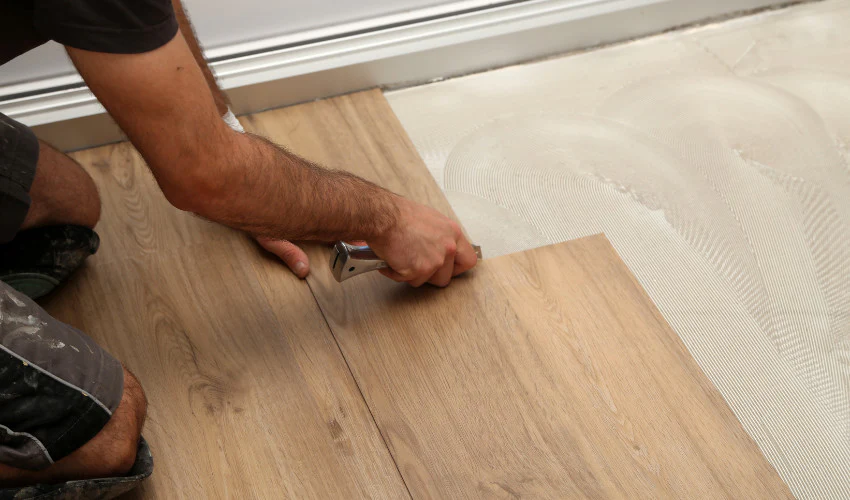Because of its cost, durability, and adaptability, vinyl flooring is among the most often used options available to homeowners. Whether you’re installing vinyl flooring in a new area or renovating an old floor, the secret to a good vinyl flooring installation is correct preparation, supplies, and methods. The parquet flooring offers a timeless aesthetic, adding elegance and warmth to any room with its intricate patterns. Let’s look at these professional advice to guarantee a perfect and seamless installation.
1. Prepare the Subfloor Thoroughly
Subfloor preparation is one of the most crucial elements of vinyl flooring installation. Future issues like buckling or gaps cannot be avoided by a surface that is just clean, dry, level. Eliminate any old flooring, nails, and trash before beginning the install. If you are working with concrete, be sure it is absolutely dry and devoid of flaws. Look for any loose boards or squeaks on wood subfloors; after the vinyl is put in place, they can lead problems. Your subfloor’s state may determine whether you need to use a leveling compound to guarantee a smooth surface.
2. Choose the Right Vinyl Flooring
The ultimate result can be much different depending on the type of vinyl flooring you choose for your room. Shevel vinyl, vinyl tiles, and vinyl planks are just a few of the several forms vinyl takes. While vinyl planks can resemble hardwood flooring and are simple to install with click-lock systems, sheet vinyl provides flawless designs perfect for bathrooms or kitchens. Conversely, vinyl tiles have a distinctive appearance and can be utilized to design patterns and layouts. Think also about the vinyl’s wear layer, particularly in high-traffic areas where you are laying flooring. More durability and improved defense against stains, fading, and scratches come from a thicker wear layer.

3. Acclimate the Vinyl Before Installation
Let the vinyl flooring’s material acclimate to room temperature before beginning installation. After unwrapping the vinyl, arrange it flat in the room it will be used for 48 to 72 hours. Once the vinyl is set down, this helps stop expansion or contraction, so preventing over time buckling or warp of the floor. By ensuring that the vinyl responds to the room’s humidity and temperature, acclimating it guarantees a more consistent and smooth installation.
4. Follow the Installation Instructions Carefully
Whether you choose peel-and- stick vinyl, click-lock, or glue-down, each kind has particular installation guidelines. Following manufacturer recommendations guarantees correct installation and helps to prevent future problems. Apply the glue evenly and make sure every plank or tile is firmly pressed into place if you are employing a glue-down technique. To line the planks and lock click-lock vinyl into place, closely refer to the directions. Stagger the seams to produce a more seamless, natural look.
Many homes seeking a fashionable, durable, and reasonably priced flooring solution will find vinyl flooring to be a great fit. You can guarantee a professional-looking floor by properly prepping the subfloor, choosing the perfect vinyl flooring, acclimating the material, using correct installation techniques, and finishing precisely. The parquet flooring is durable and versatile, providing a stylish, long-lasting solution for both modern and traditional spaces.

